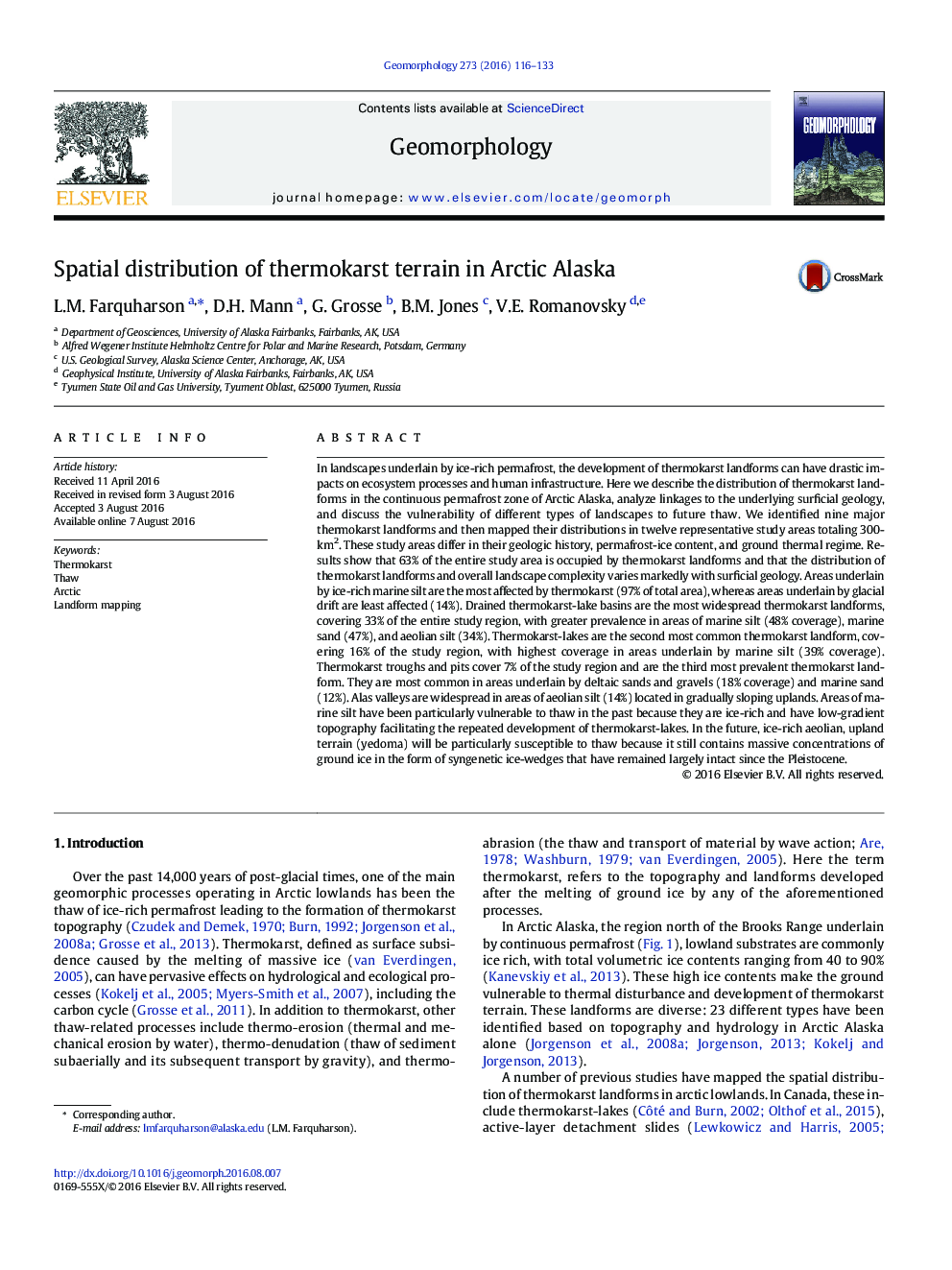| کد مقاله | کد نشریه | سال انتشار | مقاله انگلیسی | نسخه تمام متن |
|---|---|---|---|---|
| 6431566 | 1635376 | 2016 | 18 صفحه PDF | دانلود رایگان |
- Nine types of thermokarst landform mapped across six different surficial geology types
- Sixty-three percent of the 300-km2 study area is covered by thermokarst landforms
- Thermokarst landform distribution varies across surficial geology types, ice-rich marine silt areas most thermokarst affected
- Drained thermokarst lake basins are the most widespread thaw-related landform, covering 33% of the study region
- In the future, ice-rich aeolian upland terrain (yedoma) and marine silt may be particularly susceptible to thaw
In landscapes underlain by ice-rich permafrost, the development of thermokarst landforms can have drastic impacts on ecosystem processes and human infrastructure. Here we describe the distribution of thermokarst landforms in the continuous permafrost zone of Arctic Alaska, analyze linkages to the underlying surficial geology, and discuss the vulnerability of different types of landscapes to future thaw. We identified nine major thermokarst landforms and then mapped their distributions in twelve representative study areas totaling 300-km2. These study areas differ in their geologic history, permafrost-ice content, and ground thermal regime. Results show that 63% of the entire study area is occupied by thermokarst landforms and that the distribution of thermokarst landforms and overall landscape complexity varies markedly with surficial geology. Areas underlain by ice-rich marine silt are the most affected by thermokarst (97% of total area), whereas areas underlain by glacial drift are least affected (14%). Drained thermokarst-lake basins are the most widespread thermokarst landforms, covering 33% of the entire study region, with greater prevalence in areas of marine silt (48% coverage), marine sand (47%), and aeolian silt (34%). Thermokarst-lakes are the second most common thermokarst landform, covering 16% of the study region, with highest coverage in areas underlain by marine silt (39% coverage). Thermokarst troughs and pits cover 7% of the study region and are the third most prevalent thermokarst landform. They are most common in areas underlain by deltaic sands and gravels (18% coverage) and marine sand (12%). Alas valleys are widespread in areas of aeolian silt (14%) located in gradually sloping uplands. Areas of marine silt have been particularly vulnerable to thaw in the past because they are ice-rich and have low-gradient topography facilitating the repeated development of thermokarst-lakes. In the future, ice-rich aeolian, upland terrain (yedoma) will be particularly susceptible to thaw because it still contains massive concentrations of ground ice in the form of syngenetic ice-wedges that have remained largely intact since the Pleistocene.
Journal: Geomorphology - Volume 273, 15 November 2016, Pages 116-133
